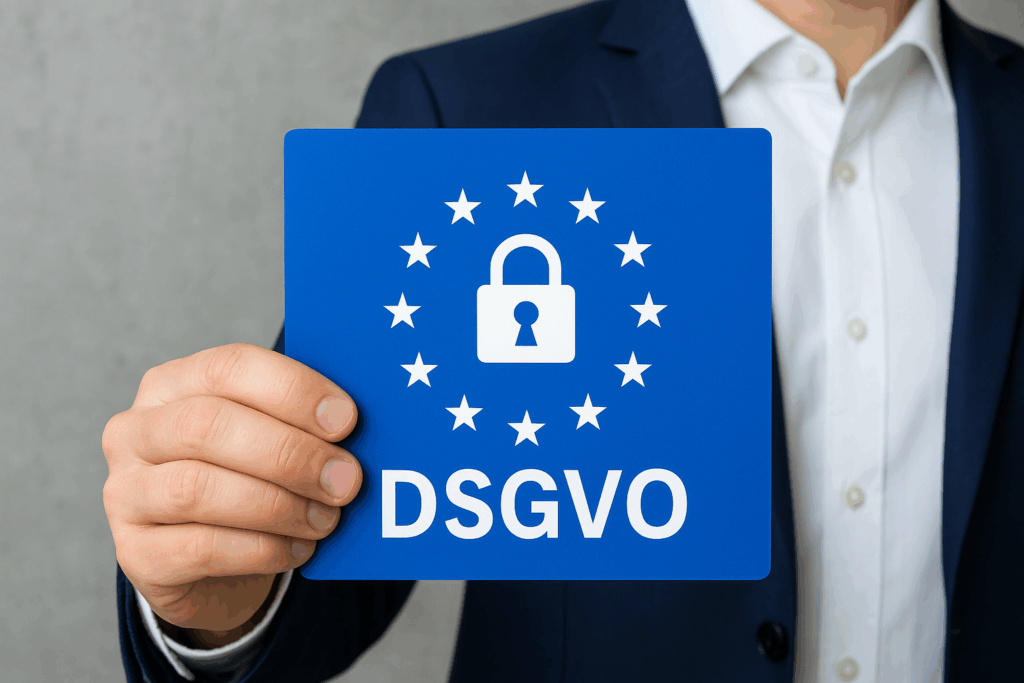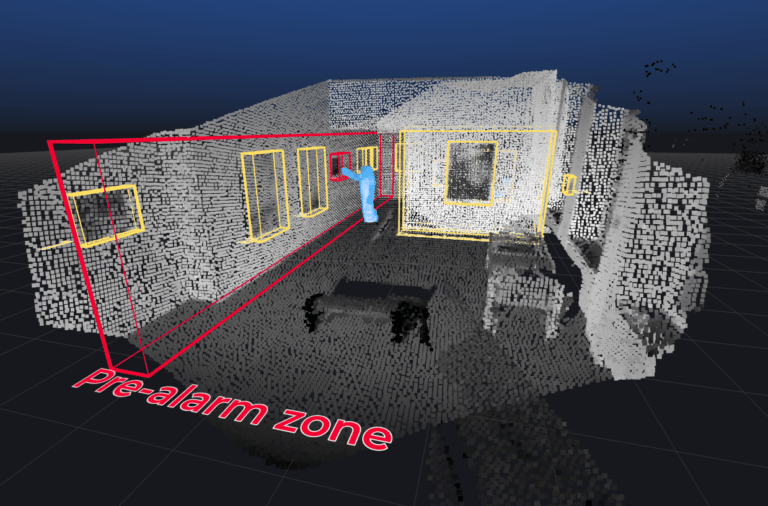How can security be ensured without compromising people’s privacy? This question has never been more relevant. In busy city centers, logistics hubs, museums, banks, and publicly accessible infrastructure, modern security demands reliable monitoring solutions, while also respecting data protection laws.
The General Data Protection Regulation (GDPR) sets clear boundaries: surveillance is permissible only when it is necessary, proportionate, and compliant with privacy regulations. Traditional video-based systems often struggle in this context, as they inherently capture identifiable personal information.
This creates a fundamental conflict for many organizations: they must secure areas while also ensuring that the privacy of individuals remains protected. 3D LiDAR offers a way out. The technology enables precise object detection and reliable monitoring without generating personal data. The following article explains why the use of 3D LiDAR is GDPR-compliant and why it represents a strong alternative to traditional cameras in public spaces – technically superior and privacy-friendly by design.
Data Protection Requirements and Current Challenges for Security Solutions
Security systems can be designed to be GDPR-compliant if certain legal and organizational requirements are met. A basic prerequisite is a clear legal basis for the processing of personal data that may be generated during surveillance. In most cases, this is based on the legitimate interest according to Art. 6(1)(f) GDPR, for example, to protect property, prevent theft, or ensure the safety of employees, visitors, or passersby. The security interest must always be carefully balanced against the rights and freedoms of the individuals affected.

A central component of GDPR-compliant security monitoring is adherence to the data protection principles defined in Art. 5 GDPR. Collected data must be limited to what is necessary to achieve the purpose. It may only be stored for as long as required, typically no longer than a few days unless a specific incident justifies longer retention. Furthermore, data use must be strictly purpose-bound: it may be used exclusively for security purposes, such as incident investigation or detecting unauthorized access, and not for other analyses or commercial objectives.
Technical and organizational implementation also plays a crucial role. Security monitoring systems should follow the principles of “privacy by design” and “privacy by default” (Art. 25 GDPR). This includes monitoring only relevant areas, anonymizing data wherever possible, and implementing technical measures that ensure data security.
Why Traditional Cameras Often Fail to Meet Data Protection Requirements
Video surveillance systems bring additional challenges: modern CCTV, IP, and other camera technologies capture scenes in the visible spectrum and generate 2D color images. These images always contain personal information like faces, clothing, body shapes, movement patterns, or individual behaviors. Many systems also employ AI-based analysis tools such as facial recognition or behavior detection, significantly increasing the risk of invading privacy.

Camera-based surveillance systems must therefore comply with a range of additional legal requirements. Operators are obliged to provide clear and transparent signage that informs individuals about the monitored area, including details about the purpose of the surveillance, the duration of data storage, and the responsible organization in accordance with Art. 13 GDPR. Furthermore, access rights to the recorded material must be strictly regulated to ensure that only authorized personnel can view or process the data. The storage of video footage must also be technically secured and limited to the minimum necessary, as stipulated by Art. 32 GDPR. Together, these obligations significantly increase both the administrative workload and the legal responsibility associated with conventional camera systems.
How 3D LiDAR Solves the Privacy Challenge
3D LiDAR takes a fundamentally different approach from conventional video surveillance, avoiding many of the data protection challenges associated with cameras. The technology relies on measuring distances based on the time of flight of light. A LiDAR sensor emits light pulses, receives the reflected light, and calculates the exact distance to every point in its surroundings. The result is a detailed three-dimensional point cloud.
The decisive difference from video technology lies in the nature of the data: only distance measurements are captured. Point clouds do not contain faces, clothing, or any identifiable characteristics. People appear only as volumetric objects, anonymous and with no possibility of identification. As a result, LiDAR data is not considered personal data, and many regulatory obligations that apply to cameras do not apply.
At the same time, the spatial accuracy of 3D data enables excellent object and motion detection. LiDAR can classify objects and reliably detect when a secured area is being entered. This detection works independently of lighting and weather conditions, even in complete darkness, intense sunlight, or dense fog.

Deploying 3D LiDAR in Public Spaces
The benefits of the technology are particularly apparent in public environments. Since LiDAR generates only anonymous 3D point clouds and processes no personal data, it is subject to far fewer regulatory requirements and thus reduces administrative effort.
In practice, this means that perimeter protection along sidewalks, access roads, or municipal fencing can be implemented efficiently without the need for approvals, works council agreements, or extensive data protection impact assessments. Surveillance remains legally unproblematic while still ensuring full security.
LiDAR can also help strengthen public trust in modern security solutions. Organizations can maintain high safety standards without raising concerns about privacy violations – an essential factor for broad acceptance and smooth operation in public and semi-public areas.

Why 3D LiDAR Is a Future-Proof and GDPR-Compliant Solution
3D LiDAR offers a combination of functional security and privacy protection that conventional cameras cannot achieve. The key advantages are:
Privacy-Friendly, Inherently Anonymous Data
The generated 3D point clouds contain no identifiable information, reducing legal complexity and minimizing administrative tasks related to documentation and transparency.
Legal certainty in public areas
Since no personal data is processed, LiDAR can be used in locations where video cameras are legally restricted, such as along public walkways or fences close to pedestrian traffic.
High robustness against environmental conditions
LiDAR operates reliably in daylight and darkness, in rain, snow, fog, and harsh sunlight, ensuring consistent detection performance.
Volumetric detection for fewer false alarms
The three-dimensional representation allows accurate determination of object size and motion, reducing false alarms caused by animals or wind-driven foliage.
True perimeter security without invading privacy
Sites can be protected effectively without capturing individuals in their personal sphere.
3D LiDAR GDPR-compliant Solutions Secure Perimeters and Personal Data
3D LiDAR combines robust security capabilities with a GDPR-compliant data foundation. The technology meets the high requirements of modern perimeter protection without collecting or storing personal data. It delivers reliable performance even under challenging environmental conditions and significantly reduces false alarms through volumetric analysis.
Thus, 3D LiDAR is not only a technological advancement but also a solution that harmonizes security and privacy, supporting businesses, operators, and public institutions that must ensure safety while avoiding data protection risks.








